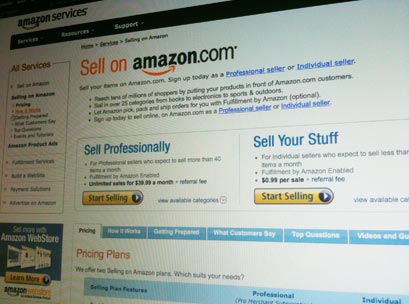The giants have woken from their slumber. This month, Walmart, the world’s biggest retailer, kicked out Amazon’s Kindle.
Although not publicly stated, the retailer’s actions were likely to be in response to the growing showrooming trend, with more consumers browsing in stores like Walmart and then buying on Amazon.
In May this year, Target in the US also deleted Kindle. This followed a much-publicised letter from Target to its suppliers in January, which read in part: “we aren’t willing to… let online-only retailers use our brick and mortar stores as a showroom for their products and undercut our prices without making investments, as we do, to proudly display your brands.”
The truth is that Amazon is siphoning sales from retailers big and small across the world.
To rub it in, last Christmas Amazon invited its customers to visit a physical retailer, scan the prices of any three toys, electronic or sporting goods, or CD’s and get five per cent off at Amazon for each barcode scan.
The Amazon Effect is likely to snowball from here. Last month, ex-Asda CEO, Andy Bond, (Asda is owned by Walmart) forecast that by 2020 Amazon would usurp Walmart as top dog in global retail.
So no matter what category you are in, it’s time to formulate a clear ACDT strategy.
What’s ACDT stand for? Amazon Can’t Do This.
If you sell a product that is a commodity and can be readily shipped, or you offer a service that can be surpassed, you are wide open to being steamrolled by Amazon.
And remember, Amazon is not just Amazon. It’s also Zappos – shoes, Endless.com – fashion, Diapers.com – baby, Book Depository – books, Wag.com – pets… and the list goes on and on. So you have to be clearly differentiated.
How do you get to an ACDT Strategy? Step one is to understand Amazon. And the best place to start is by studying Jeff Bezos’ (Amazon founder and CEO) 1997 letter to shareholders. (Click here to read the full text.)
This letter serves as a blueprint for Amazon’s strategy – it’s attached to every year’s annual report to this day. Bezos writes that:
This is day one for the internet
According to a recent article in Forbes Magazine, “he hasn’t budged from (that observation)”.
It’s all about the long term
Bezos plays the long game, even if that is contrary to “short term profitability considerations or short term Wall Street reactions”.
We must obsess over customers
This translates into a “dogged focus on improving the shopping experience”, and innovations like 1-Click shopping, introduced way back in 1997.
We will continue to measure our programs and the effectiveness of our investments analytically…
Amazon is a relentlessly metric-driven marketer.
We are on a mission
“We are working to build something important, something that matters to our customers, something that we can tell our grandchildren about.”
So Bezos expects dedication – “when I interview people I tell them, ‘you can work long, hard, or smart, but at Amazon.com, you can’t choose two out of three.’”
We must remain vigilant and maintain a sense of urgency
These guys are extremely focused, healthily paranoid and are impatient for success.
Step two in putting together your ACDT strategy is to figure out where you can win over a competitor like Amazon.
Bloomberg Businessweek noted several key focus areas, in a recent article entitled ‘How to save Best Buy from extinction’, addressed to Best Buy, the once-mighty US electronics retailer:
• Concentrate on improving the instore shopping experience. The “one advantage” that Best Buy has “is their physical stores”.
• Overhaul customer service. Employees need to be “conversant in what it is they’re talking about” and “make it easy for people to return stuff”.
• Become more competitive “from a pricing standpoint”.
• “Procure some more exclusive products that will help to drive traffic”.
The final point is the most pertinent. If you have easily comparable product, you are in trouble.
“You can’t build a company if everything you sell is cheaper somewhere else”, as J. Crew CEO, Mickey Drexler, told Westfield World Retail Study Tour attendees this year.
So you must create compelling private label brands, push national brand suppliers for exclusives, and build limited edition collections and customised product.
Make the litmus test across every area of your business: can Amazon do this? (And once you’ve done that, you can move on to your GCDT Strategy – Google Can’t Do This).
* Jon Bird is CEO of specialist retail marketing agency IdeaWorks (www.ideaworks.com.au) and chairman of Octomedia, publisher of Inside Retail. Email here. Blog: www.newretailblog.com Twitter: @thetweetailer






